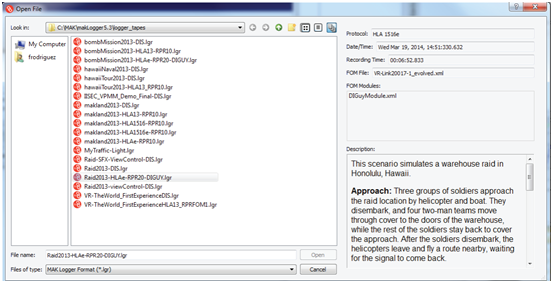|
| |
| |
|
What is this Logger File?
|
| |
| |
|
|
Interoperability is hard. It is hard because there are myriad open standards out there, as well as multiple protocols, operatingsystems, and, of course, requirements. At VT MÄK, we understand this. To help, we have always tried to support the widestvariety of configurations that we can. All of our products support four different DIS versions, three different HLA versions, and aplethora of FOMS, operating systems, and compilers. VR-Exchange expands this even further with DDS, TENA, and many otherprotocols.
Unfortunately, with this flexibility comes complexity. Take a Logger file, for example. A Logger file could be DIS, HLA 1.3, HLAEvolved, or HLA 1516. It could have been written in RPR 1.0. RPR 2.0, or any other FOM. It could be using VR-Link Revision 1 or6. And now with HLA Evolved, it could have a lot of HLA modules on top of that.So how can you tell? How can you configure your MÄK Data Logger to make sure that your file is loading correctly?
The answer in the new MÄK Data Logger version 5.3 is easy. You don’t have to do anything. When you load a logger file, our logger will automatically load the right FOMs and FOM Modules, as well as configure the right versions for you. So you can sitback and watch the traffic flow by. You can still, of course, reconfigure your file if you wantAnd if you’re interested, we have enhanced the loading screen for the MÄK Data Logger to show you all of this extraconnection information, including the protocol, even if you are running a different protocol version of the Logger. Nomore guessing is necessary.
|
| |

|
| |
|
As you can see from the screen shot, we also include a description field in every Logger file. Filling out this field isentirely optional, but if you want more information about what you are seeing, the description is there for you. Thisisn’t a large feature, but we hope that little things like this will make your life easier and your interoperability problemsless challenging. After all, that’s what we’re here for. Find attached the release notes for more information. |
| |
|
| |
|